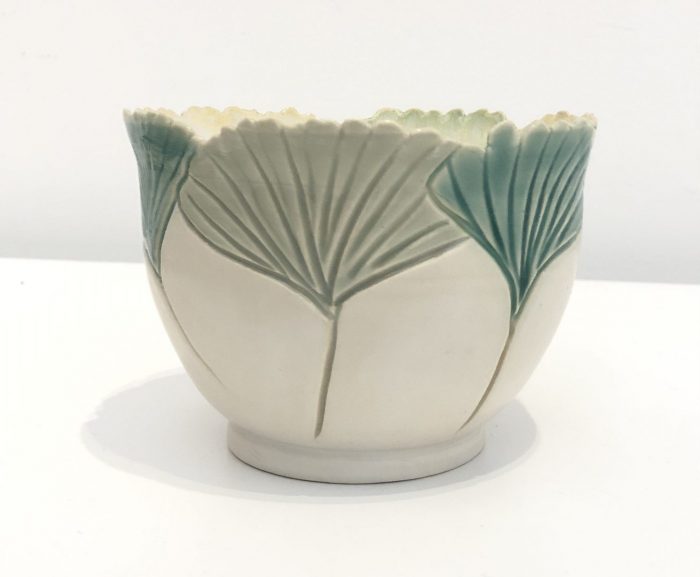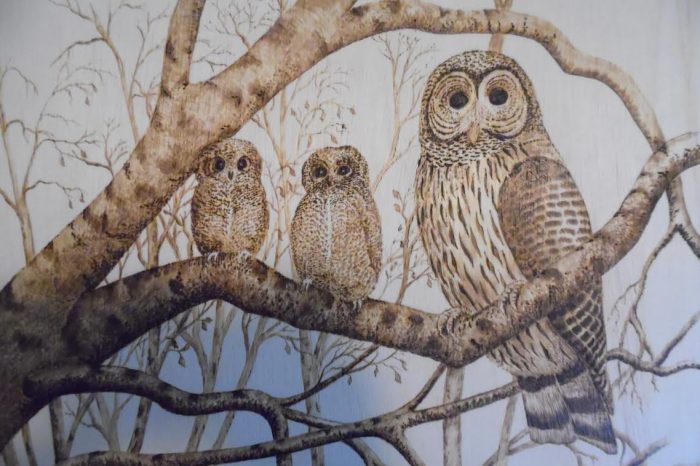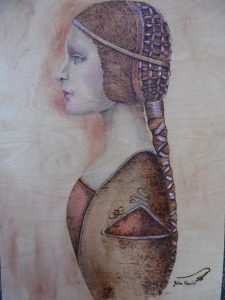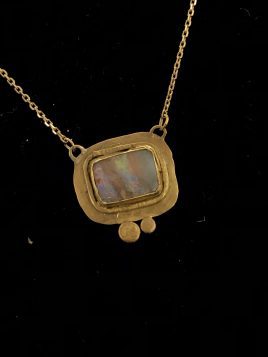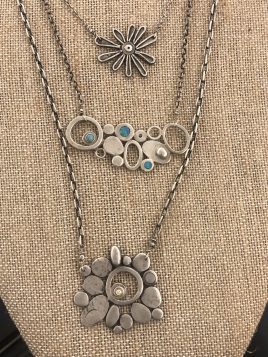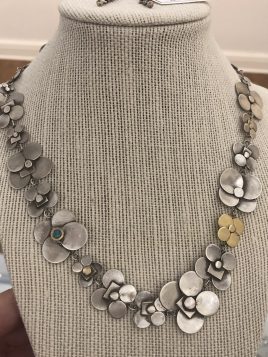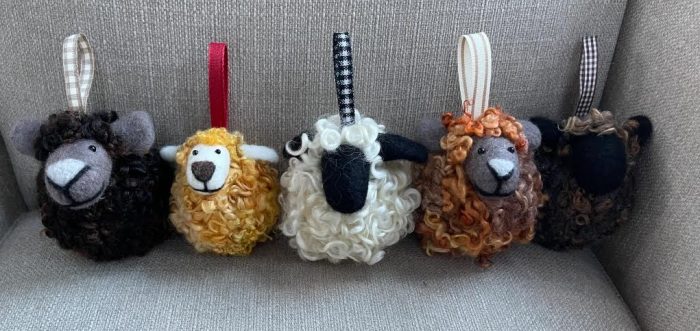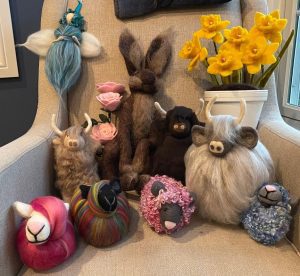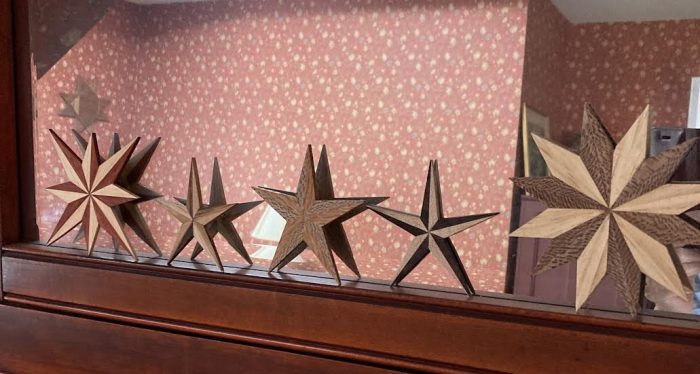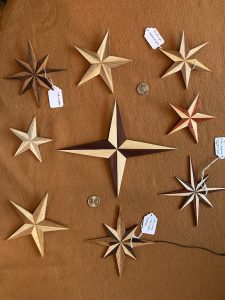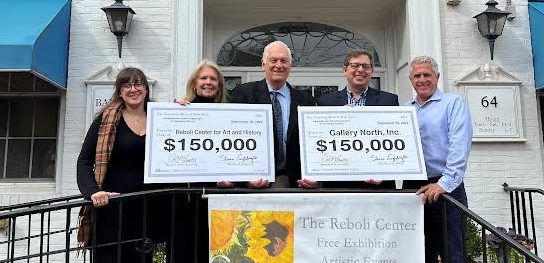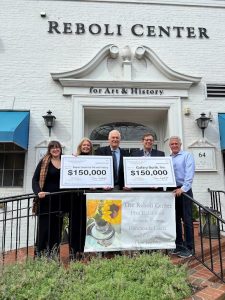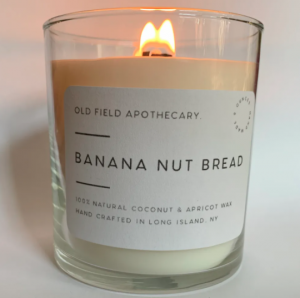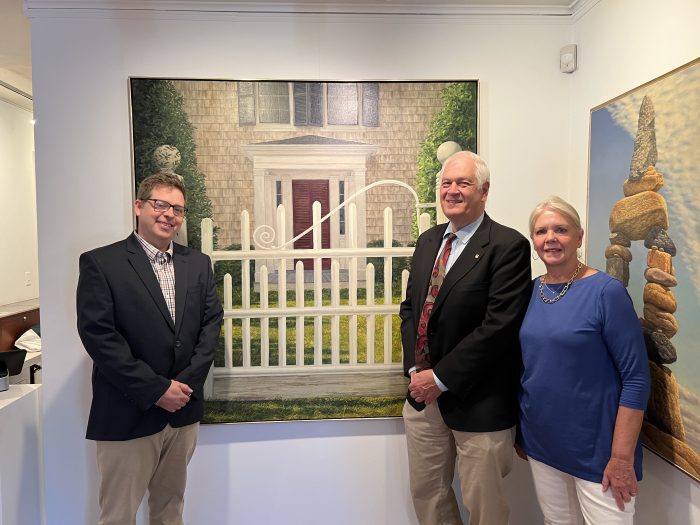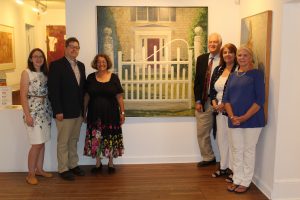For the month of April, the Reboli Center for Art and History is showcasing the extraordinary ceramics of Kathy Larocca inspired by nature, especially botanicals, shells and fossils.

Larocca’s passion for ceramics started more than a decade ago. “Forming art from a mound of clay got me hooked immediately on creating ceramics. I love the tactile quality of clay, whether it is made on a wheel or hand built. Each method has its own challenges and never-ending possibilities. I have taken many classes at local studios on Long Island and attended multiple workshops, both in person and virtually. I belong to several art groups and get inspiration from their creativity,” she explains.
Lois Reboli, president and a founder of The Reboli Center, said, “I find Kathy’s work a perfect fit for The Reboli Center, since we are located by Stony Brook Harbor and her work is so soothing and beautiful. Her designs are just exquisite.”
For her ceramics, Larocca uses mostly B-mix clay to create her pieces because of its porcelaneous quality and creamy color. In addition, she notes that it works well with the glazes she uses. The artist elaborated on her process by stating, “As I develop an idea for a piece, I decide whether to create it on the wheel or by hand. Occasionally I sketch a draft of what the envisioned piece should look like. With ceramics, timing the drying work is essential, since the process involves multiple steps. Much of my work is carved (sgraffito) and the clay needs to be the correct dryness for this process to be successful. Once the piece is out of the kiln for the first firing, it is then glazed and put back in the kiln to vitrify.”
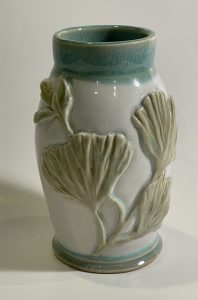
Larocca notes that she doesn’t count the number of hours it takes to make something as there are many steps involved and it depends on the intricacy of her work. “When I work with clay or any form of art, the time melts away as I am completely engaged in the process,” she said.
Ever since she was a young girl, Larocca nurtured her creative side by exploring and enjoying art, especially sketching and painting. She continued her love of art by attending the New York Institute of Technology and discovered a fascination with animation. Upon graduation, she worked at several studios in Manhattan and on a variety of projects including movies, television commercials and animation shorts. She relocated to California where she worked in the inking department of Hanna-Barbera Studios, a major television animation and production company. Its shows included such classic cartoons as The Flintstones, The Jetsons, Huckleberry Finn, Scooby Doo, and The Smurfs.
Larocca eventually moved back to New York and started a business called “Wrap It Up” where she personalized gifts for people of all ages. In addition, she continued to explore her creative side by designing and making jewelry.
In addition to exhibiting at the Reboli Center, the artist has shown her work at the Bayard Arboretum, Islip Art Museum, Suffolk County Historical Society, fine art shows and numerous libraries. “I am ecstatic to have the opportunity to be the Artisan of the Month at the acclaimed Reboli Center,” she said.
The Reboli Center for Art and History is located at 64 Main Street in Stony Brook, and is open Tuesday to Saturday from 11 a.m. to 5 p.m. and on Sunday from 1 to 5 p.m. Admission is free. For more information, please call 631-751-7707 or visit www.rebolicenter.org.

